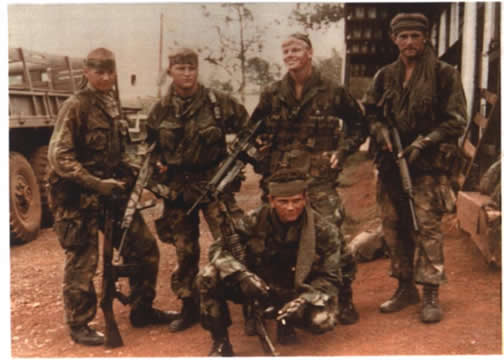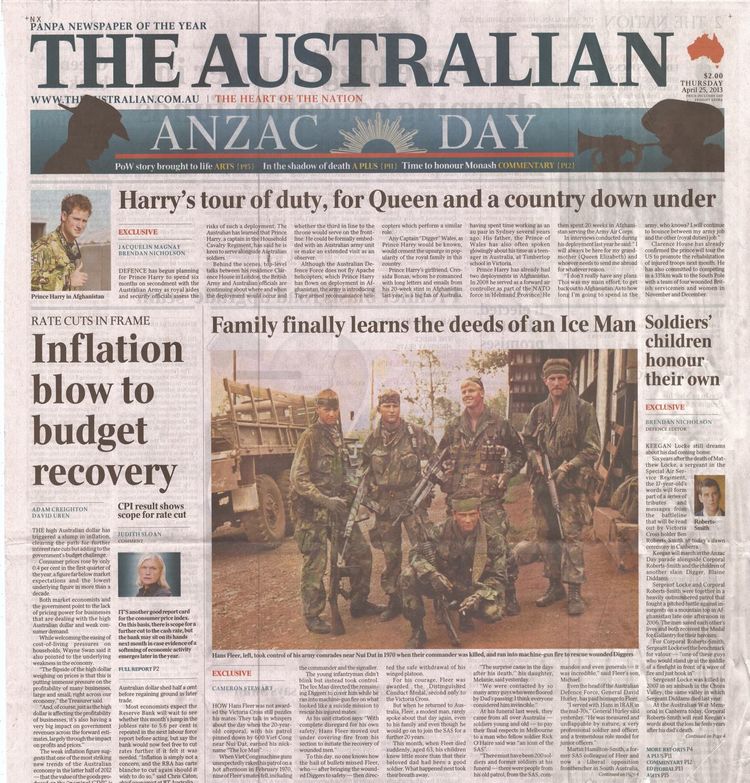At the outset we have to state that we are not setting out to make just another Vietnam War story. It is important to us that this is our version, the Australian version, of that war. Viewed through our eyes, our attitudes, our humour, our almost larrikin approach, with an understanding that our role was vastly different to our Allies’ and way under funded to boot. These are our heroes, albeit with reluctance in some cases, certainly never without questioning the role of our authority and reason for being there. We have done a lot of work to make sure we achieve this. We also want to show the contrast between the Aussie way and the Yank way of going about this war, and most importantly the emotional havoc it wreaked on our own soldiers.

We also want to show the price the professional soldier pays. Hence our tagline- “The past is not dead. It is not even past”. Graham Brammer has been the soul of this project since it began. Almost all the events in the film are based on actual events that took place whilst Graham served in Vietnam with the Australian Special Air Service (SAS) in 1969, and again in 1971. This is why we have opted for the story to be told in two time frames twelve years apart. The juxtaposition between ‘past’ and ‘present’ enhances the emotional content.
We have set ourselves the goal of telling a universal story, (one that really could take place in any war fought by any nationality) in a way that would depict the Australian experience and yet be understood by an international audience. Therefore, we have identified some Australian characteristics that, although distinctive, are loved the world over and focussed on these qualities when writing the screenplay.
The first of these is humour. The script is rich with the use of off-hand laconic jokes and asides. We expect the actors’ military training and rehearsal will add even more, and there is further potential in looks, shrugs and other visual “asides” which will become more evident in rehearsal. We will find a sensibility in the characters for the low-key jibe and out-of-context remarks that characterises much Australian humour. That feels right: humour as a response to terror, boosting the tension of the moment.
Secondly we wanted to capture the true pathos of war. Possibly most poignant of moments is the story of an Aboriginal SAS trooper Charlie George. Based on real events, recounted in graphic detail by Graham – killed by his old friend, in the confusion of a fire fight, with SAS patrols at cross-purposes, and Charlie George, unfortunately, wearing the “tiger stripes” of the enemy -the resonances of this true incident perfectly suited the requirements of the story, and provided comment on our racial divide that is both subtle and profound.
The killing of Charlie helps give ‘surprise’ and extra dimension to our story. We realise in unfolding storylines, that it is not just the inhumanities our soldiers have been forced to commit, such as the killing of a young girl, or the intolerable privations and moral dilemmas of their role in Vietnam but the revelation that there was a single event of such “moment” that it stands in the centre of everyone’s memories - unspoken, unspeakable.
The final element is the stylistic potential of a “super” reality. Pre-battle scenes require our soldiers to reach an unusually high state of awareness. They carry out their duties at an unnatural painstakingly slow pace, requiring superhuman control and patience, despite the incredible tension of imminent attack. Each man has to be aware, not only of their own danger but also of their role as protectors of each of their fellow patrol members under all circumstances. All five must act as one person, with almost telepathic awareness of one another and how they will react in any situation. On the other hand, battle scenes require each individual to react unnaturally quickly. Every second can last a minute or pass like a nanosecond. Every minute can last a lifetime or disappear in a flash. Vari-speed camera and selective CGI effects will portray and intensify this tension but always subtly never as a gimmick.
Sounds will be heard in a whole new manner. The starting or stopping of birdcalls or cicada whirring can signify danger or relief. Is the snap of a twig or the movement of leaves the wind or someone brushing by them? Every sound filtered through a hyper state of awareness. And that’s how we’ll hear it. The sounds being enhanced; focused in on, electronically cheated and so on. Sound and images working together, shots will have their framing affected by the special sounds to create extra anxiety or even humour.
In dramatic contrast to that canopied jungle, the bare drought-stricken countryside of the Australian scenes will offer an infinite horizon, an invitation to meditate on solitude; to count the cost of lives lost, and the price of surviving.
Last Man will speak for every man that ever fought in war; for every warrior who ever made a kill. A film that will grab the audience and propel them into the world of the SAS patrol in Vietnam; and their emotional crises back home twelve years later. In focussing on the professional soldier, Last Man explores fresh territory.
Last Man has a unique voice; it’s unlike any Vietnam movie and is an important mirror to current events. The SAS and other special forces are fighting with these tactics in Afghanistan and Iraq right now. In the current world climate its message has profound significance.
Fred Schepisi and Warwick Young
January 2013

Sadly Hans Fleer who served with writer Graham Brammer in Vietnam and one of the inspirations behind Last Man passed away recently. On ANZAC Day 2013 this story about Hans and a photograph of the SAS patrol he and Graham served in in Vietnam made the front page of The Australian newspaper.